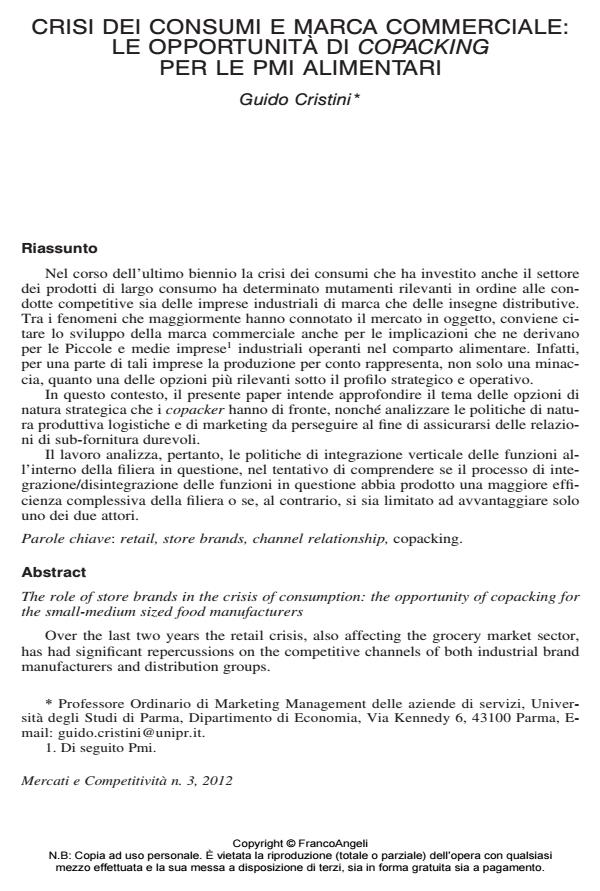The role of store brands in the crisis of consumption: the opportunity of copacking for the small-medium sized food manufacturers
Journal title MERCATI E COMPETITIVITÀ
Author/s Guido Cristini
Publishing Year 2012 Issue 2012/3
Language Italian Pages 27 P. 57-83 File size 1827 KB
DOI 10.3280/MC2012-003004
DOI is like a bar code for intellectual property: to have more infomation
click here
Below, you can see the article first page
If you want to buy this article in PDF format, you can do it, following the instructions to buy download credits

FrancoAngeli is member of Publishers International Linking Association, Inc (PILA), a not-for-profit association which run the CrossRef service enabling links to and from online scholarly content.
Over the last two years the retail crisis, also affecting the grocery market sector, has had significant repercussions on the competitive channels of both industrial brand manufacturers and distribution groups. Although this period has been characterised by numerous factors, it is clearly worth mentioning the development of the store brand, which has become particularly relevant also for its implications on the small and medium-sized food industries. Indeed, for some of these companies copacking represents one of the most important options from a strategic point of view. In this context, the paper aims to make an in-depth analysis of both the strategic options that are available to the copacker and the production and service policies which must be taken into consideration in order to guarantee long-term sub-supplier relations. The paper, therefore, examines the vertical integration policies of the internal workings of the company in question, in the attempt to understand the course of action taken and the possible outcomes. Thus, the interest lies in understanding whether this exchange of activity has resulted in greater efficiency for the company or if it has limited the benefits to just one of the two parties involved.
Keywords: Retail, store brands, channel relationship, copacking.
Guido Cristini, Crisi dei consumi e marca commerciale: le opportunità di copacking per le PMI alimentari in "MERCATI E COMPETITIVITÀ" 3/2012, pp 57-83, DOI: 10.3280/MC2012-003004